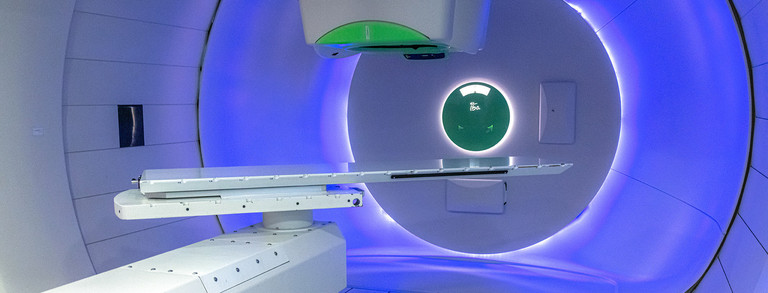Research program of AMTEC-PRO
The research program of AMTEC-PRO is designed to reach its global goal of improving the standard of care in PT by enabling and establishing new or significantly enhanced methods, technologies and treatment procedures. The foundation of the research program is strong fundamental research in the STEM disciplines that is transferred to applications in medicine. The research projects are situated at the interfaces between medicine, physics and chemistry, and they make use of modern methods in particle technology, computer vision and machine learning.
We have identified three clinically relevant aspects of proton therapy, which we aim to improve, namely beam delivery and the understanding of dose distributions, decoding radiation effects on different scales, and contriving the mechanisms of noble metal nano particle sensitizers and Gd complexes for proton therapy. These aspects are the subjects of three Task Areas that center around the main areas of expertise of the principle investigators and that are supported by experts from the field of proton therapy and neighboring disciplines. The three TAs are:
With this task area, we aim to improve two critical aspects of precision proton therapy, namely the beam delivery and the understanding of the resulting dose distribution in the patient. The research projects address the development of novel semiconductor instruments to reduce the range uncertainty in treatment planning by proton radiography and the development of ML algorithms for predicting dose distributions in a fast and reliable manner. They are concerned with a simulation framework to study the dynamical interplay of blood transport and time-modulated delivery and study the impact of the beam-delivery modalities. They include studies of combining the beam delivery modes of pencil-beam scanning and collimators in a holistic approach. The clinical relevance of the expected results is an important improvement in the precision of PT and in the sparing of healthy tissue.
Imaging the radiological thickness using proton fields and modern semiconductors
Image-guided learning of dose distributions
Circulating blood as an organ at risk in advanced radiation therapy
With this task area, we aim to enhance the understanding of radiation effects of dose caused by protons on different scales, ranging from the cellular level to the level of patients. The research projects address the role of reactive oxygen species (ROS) in PT and the potential of biocompatible nanoparticle sensitization in 2D and 3D cell cultures. They also include studies on the impact of proton irradiation on the biophysical properties and behavior of heart cells and cell networks. Furthermore, the research projects are concerned with the connection between hypofractionated PT and the relative biological effectiveness (RBE), as well as the translation of the recently developed clean dose concept into the clinical practice, which also focuses on the RBE. The clinical relevance of the expected results comprises a far better understanding of side effects from PT as well as their mitigation.
The impact of radiation on the collective behavior of heart cells
Spatially-variable, fractionation dependent RBE and the potential of hypofractionated proton therapy
The clean dose concept: Reducing the risk of unexpected toxicity in proton therapy
The aim of this task area is to improve the understanding of sensitizers for PT, in particular the impact of their design and functionality, but also the mechanisms explaining the observed sensitization. The research projects address studies on how the surface composition of Pt nanoparticles affects the generation of ROS by catalytic water splitting reactions and also the question of how specific features of surface ligands influence the generation of ROS in proton-irradiated nanoparticles. Furthermore, they study the identification of appropriate ROS probe compounds formed when aqueous and NP-doped phantoms are irradiated with protons and assess the potential of Gd-contrast agents for theragnostics in the context of PT. The clinical relevance of the expected results is a significantly better understanding of sensitizers that will ultimately lead to improved tumor control and a more effective treatment routine.
Ligand-optimized sensitizers in PT for tailored reactive oxygen species
Gadolinium complexes as MRI contrast agents and potential theragnostics in PT
Probe compounds and method development for the analysis of ROS in PT



